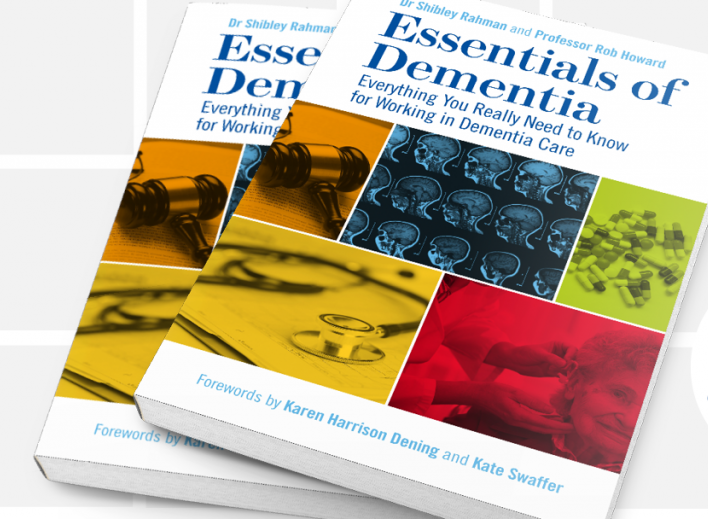Dr Emma Bray is a 2nd year speciality registrar currently working in Swansea and was delighted to review this book: ‘Essentials of Dementia’ by Dr Shibley Rahman and Professor Rob Howard.
Worldwide, there was an estimated 46.8 million individuals living with dementia in 2015, and this number is growing every day. Therefore it is difficult to pursue a career in modern medicine without encountering a person living with dementia. This could be a patient who is unwell and happens to have dementia, or somebody that has presented to the healthcare service with an issue arising as a result of their dementia.
Like many other doctors, my medical school education on dementia was heavily influenced by the pathophysiology of the disease. However when you are the medical senior house officer on call, differentiating between neurofibrillary tangles and amyloid plaques is not of paramount importance. This is a particular strength of this book. Furthermore, during my foundation training, many of my interactions with people with dementia occurred when that individual was at crisis point, for example at 2am in a busy emergency department – frightened and delirious, or during a long stay in a medical ward – coming to terms with not going back to their own home, fearful of their future. It was not until later in my career that I was fortunate enough to see people living well and independently with their dementia, and I wish I had read this book at that point!
‘Essentials of Dementia’ covers the basic physiological principles of all the types of dementia in a way that is accessible to more than just doctors. At the other end of the spectrum, it encourages the reader to consider dementia care on a national scale.
The bulk of the information is presented in a mixture of prose and concise boxes. The latter makes it an ideal revision tool for registrars like myself preparing for their speciality certificate exam. The lengthier excerpts are extremely thought provoking and implore the reader to read around the subject. Helpfully, each chapter provides references which make this easier.
Later in the book the authors talk about methods to improve awareness of dementia. It brought my attention to the ‘Dementia Friends’ programme (a collaborative campaign driven by the Alzheimer’s society and Public Health England). There are five key messages and these messages are resonated throughout the book:
- Dementia is not a natural part of ageing
- Dementia is caused by diseases of the brain
- Dementia is not just about losing your memory
- People can continue to live well with dementia
- There’s always more to the person than his or her dementia.
These messages are so fundamental and often not understood, even by fellow healthcare professionals. I now share this campaign with my colleagues, and I am grateful to the authors for including it.
What makes this book unique is that it does not just provide advice on how to diagnose dementia/treat it pharmacologically in the way normal textbooks would. The majority of the book is about how to empower your patients (and their loved ones) to live well with dementia.
In summary, I would definitely recommend this book as an essential read for anyone caring for older people with dementia. It goes beyond the clinical definition of dementia and clearly has patient-centred care at its heart. I would like to thank the British Geriatrics Society for giving me the opportunity to review this book and broaden my understanding of this huge topic.
